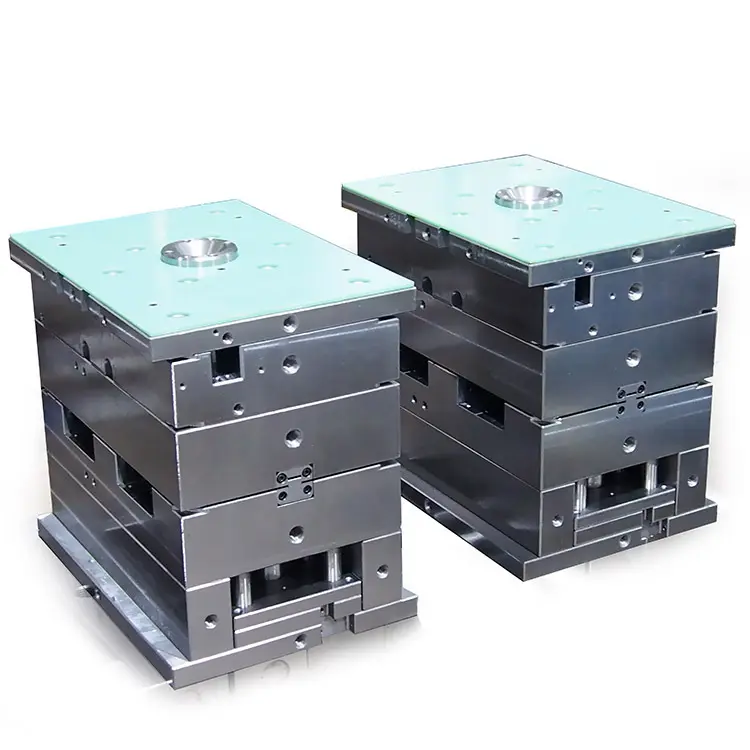Introduction to Mold Base Manufacturing
As the manufacturing landscape evolves, mold base manufacturing is experiencing significant changes, especially within the Russian market. With a focus on innovation and efficiency, businesses are increasingly adopting modern technologies and practices to enhance the quality and speed of production. This article explores the latest trends within this sector and their implications for the Russian market.
Emerging Technologies Enhancing Mold Base Manufacturing
The introduction of advanced manufacturing technologies is a game-changer for mold base production. Techniques such as 3D printing and CNC machining are becoming integral to the industry. These technologies not only streamline the production process but also allow for greater customization and precision in the creation of mold bases.
3D Printing in Mold Bases
The adoption of 3D printing in mold base manufacturing allows for rapid prototyping and reduced lead times. Companies can produce highly complex designs that traditional methods might struggle with. This technology is particularly appealing for Russian manufacturers looking to reduce costs without sacrificing quality.
CNC Machining Innovations
CNC machining has undergone significant advancements, resulting in faster production rates and enhanced accuracy. By using computer-controlled machines, manufacturers can achieve consistent results, which is crucial for meeting the stringent demands of the market.
Material Trends and Sustainability
As environmental concerns grow, there is a noticeable shift towards sustainable practices in mold base manufacturing. The use of eco-friendly materials is on the rise, driven by both regulatory pressures and consumer demand. Manufacturers are increasingly exploring biodegradable plastics and recycled materials.
Biodegradable Plastics in Mold Bases
The implementation of biodegradable plastics offers a viable alternative to traditional materials. This not only reduces waste but also aligns with the global movement towards sustainability. The Russian market is beginning to see more companies adopting these materials, setting a precedent for the future.
Recycling Initiatives
Recycling is gaining traction within the mold base sector. Manufacturers are actively looking for ways to recycle scrap materials, which not only conserves resources but also lowers production costs. This initiative is essential for Russian manufacturers aiming to enhance their competitive edge while promoting environmental responsibilities.
Impact of Globalization on Mold Base Manufacturing
Globalization has significantly impacted how mold bases are manufactured and sourced. Russian manufacturers are now competing with global players, resulting in the necessity for enhanced quality and reduced costs. This competition is pushing local companies to innovate and improve their operations.
Collaboration with International Partners
Partnerships with international suppliers and manufacturers can facilitate knowledge exchange and introduce advanced technologies to the Russian market. Collaborating globally allows Russian manufacturers to enhance their product offerings and compete effectively on an international scale.
Benchmarking Against Global Standards
As globalization increases competition, Russian manufacturers are learning to benchmark their processes against global standards. This encourages continuous improvement and adoption of best practices seen in other markets, leading to higher quality mold bases and greater customer satisfaction.
Challenges Facing the Mold Base Manufacturing Sector
Despite these positive trends, several challenges persist in the Russian mold base manufacturing market. Issues such as access to high-quality materials, skilled labor shortages, and economic fluctuations can impede progress.
Material Quality and Accessibility
Access to high-quality materials remains a barrier for many manufacturers. While some improvements have been made, ongoing supply chain challenges can lead to inconsistencies in production quality. Addressing these issues is paramount for maintaining industry standards.
Workforce Skills Gap
The shortage of skilled labor poses a significant challenge as manufacturers strive to keep up with technological advancements. Investment in workforce training and development is essential to ensure that employees are equipped with the necessary skills to implement new technologies and processes.
Conclusion
In summary, the modernization of mold base manufacturing in Russia is marked by technological advancements, a shift towards sustainability, and increased global competitiveness. Despite challenges, there are vast opportunities for growth and innovation. Companies embracing these trends will be better positioned to succeed in the evolving landscape of mold base manufacturing.
Frequently Asked Questions (FAQ)
What are the best materials for mold base manufacturing?
Traditional materials like aluminum and steel remain popular. However, there's a growing interest in biodegradable plastics and recycled materials to promote sustainability.
How is 3D printing benefiting the mold base industry?
3D printing offers the advantage of rapid prototyping, reduced lead times, and the ability to create complex shapes that may not be feasible with traditional manufacturing techniques.
What are the main challenges for manufacturers in Russia?
Manufacturers face challenges such as access to quality materials, a skills gap in the workforce, and economic uncertainties that can affect overall production.
How can Russian manufacturers compete globally?
By focusing on innovation, sustainability, and forming international partnerships, Russian manufacturers can enhance their competitiveness on a global scale.

